Abstract
High-speed photography of key pecking revealed that the arc described by the upper bill as a pigeon closes its beak is capable of operating a Lehigh Valley pigeon key set at 8 to 14 g. Arc-produced switch closure follows initial switch closure in less than 50 msec. When birds were trained on ratio schedules, the probability of interresponse times (IRTs) shorter than 50 msec exceeded 0.30. Interval-trained birds produced a much lower probability of short-IRTs. When the schedules were reversed, there was only weak evidence of a reversal in the probability of short IRTs. A temporal analysis of topographic features observed in the original photographs failed to reveal differences between ratio and interval pecking topography. It appeared that only the point of contact with the key differed between subjects trained on the two schedules. It was concluded that only the locus, but not the topography, of the food-reinforced key peck was modified by the schedule of reinforcement.
Full text
PDF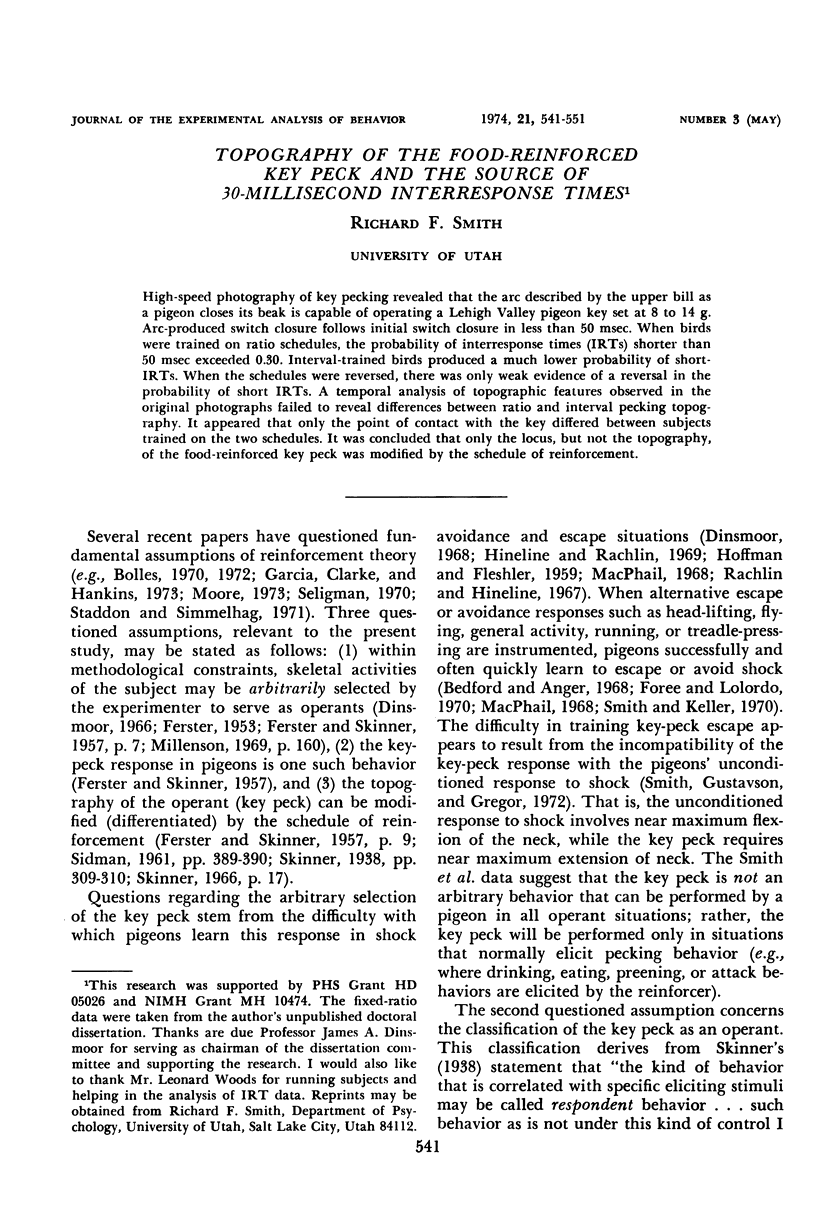
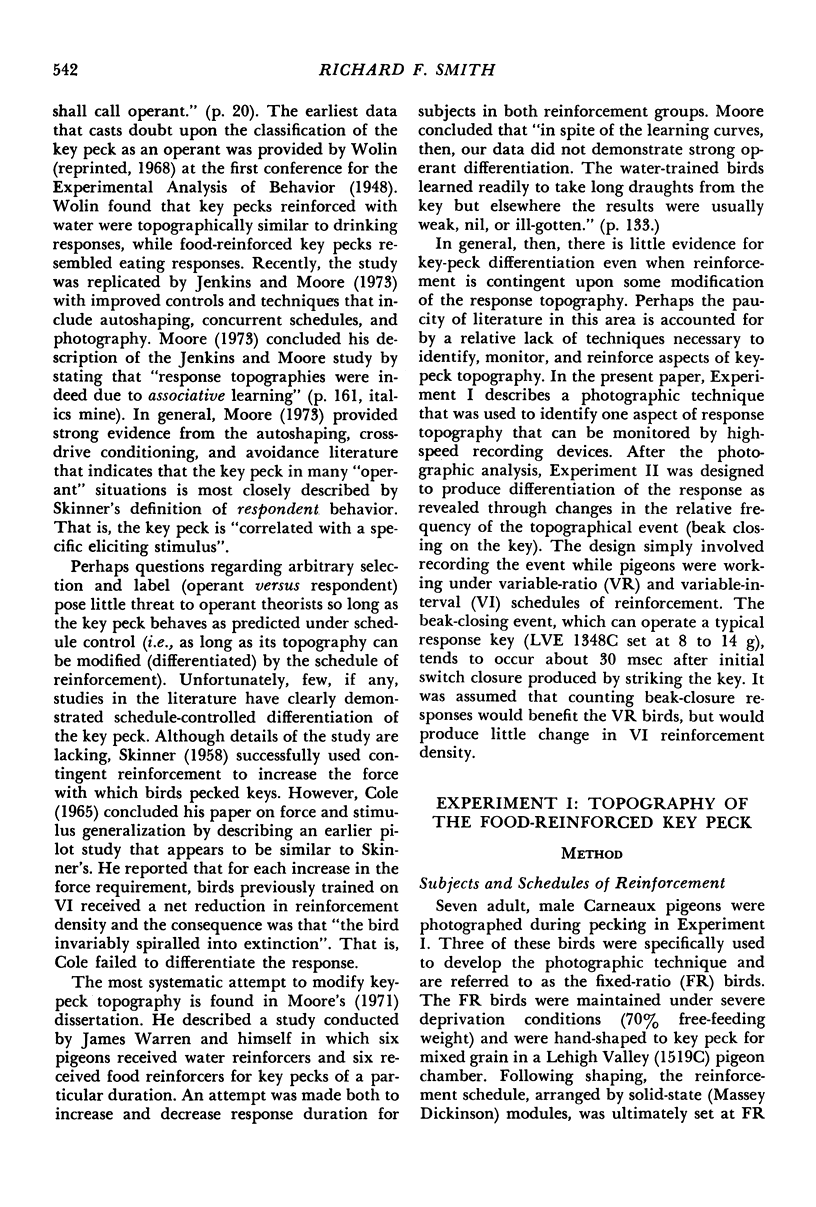
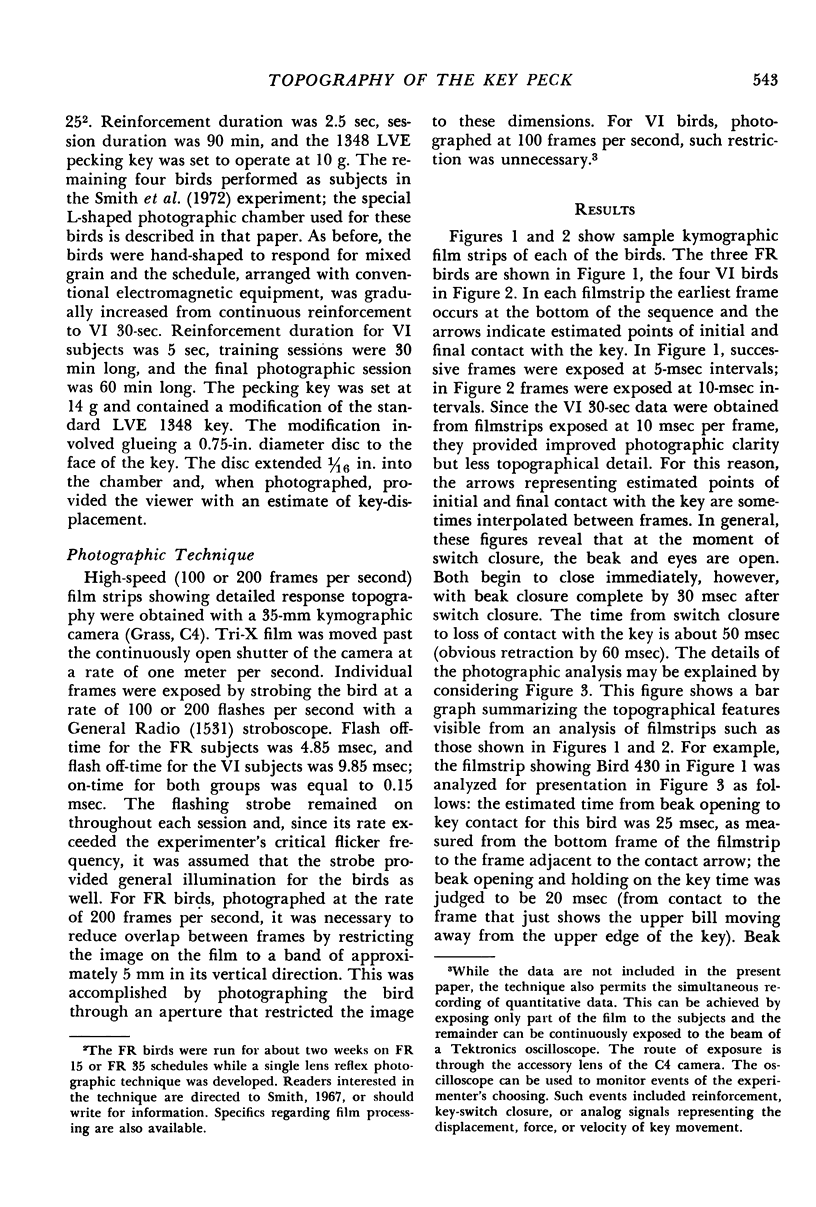

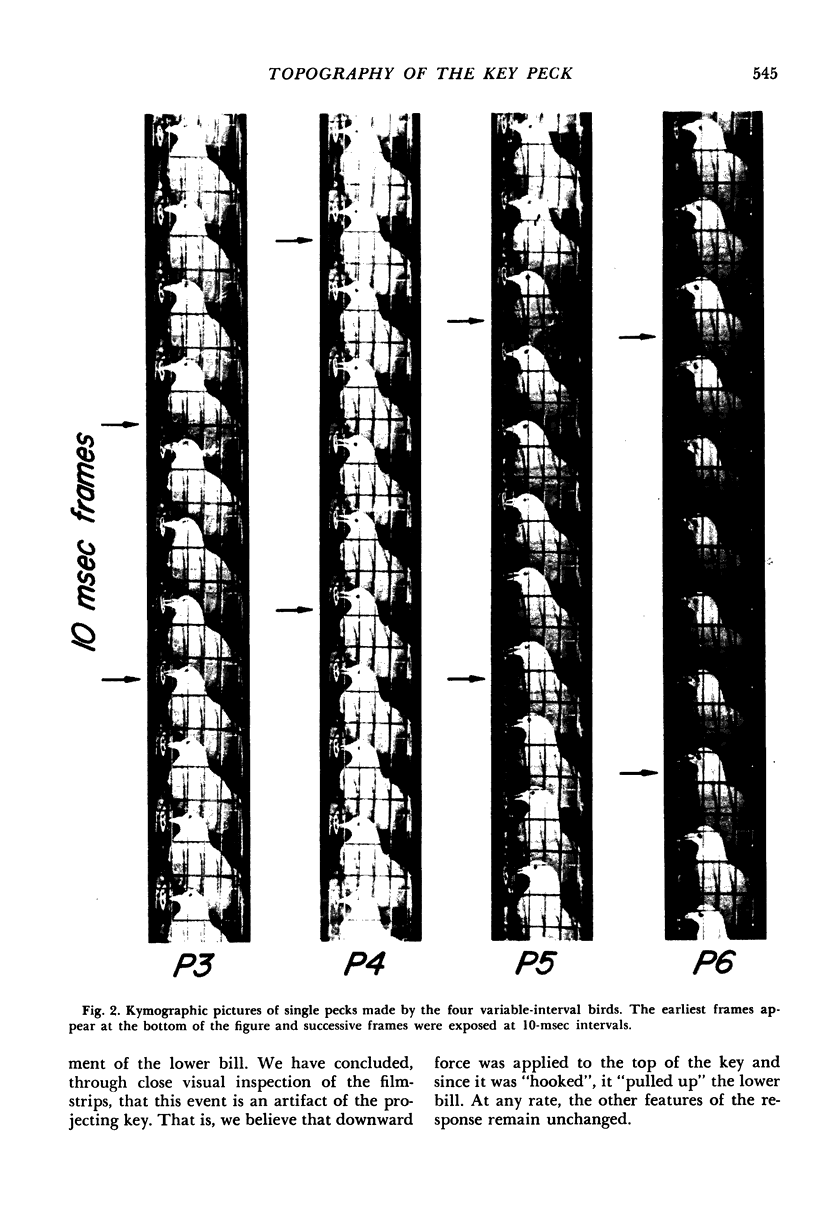
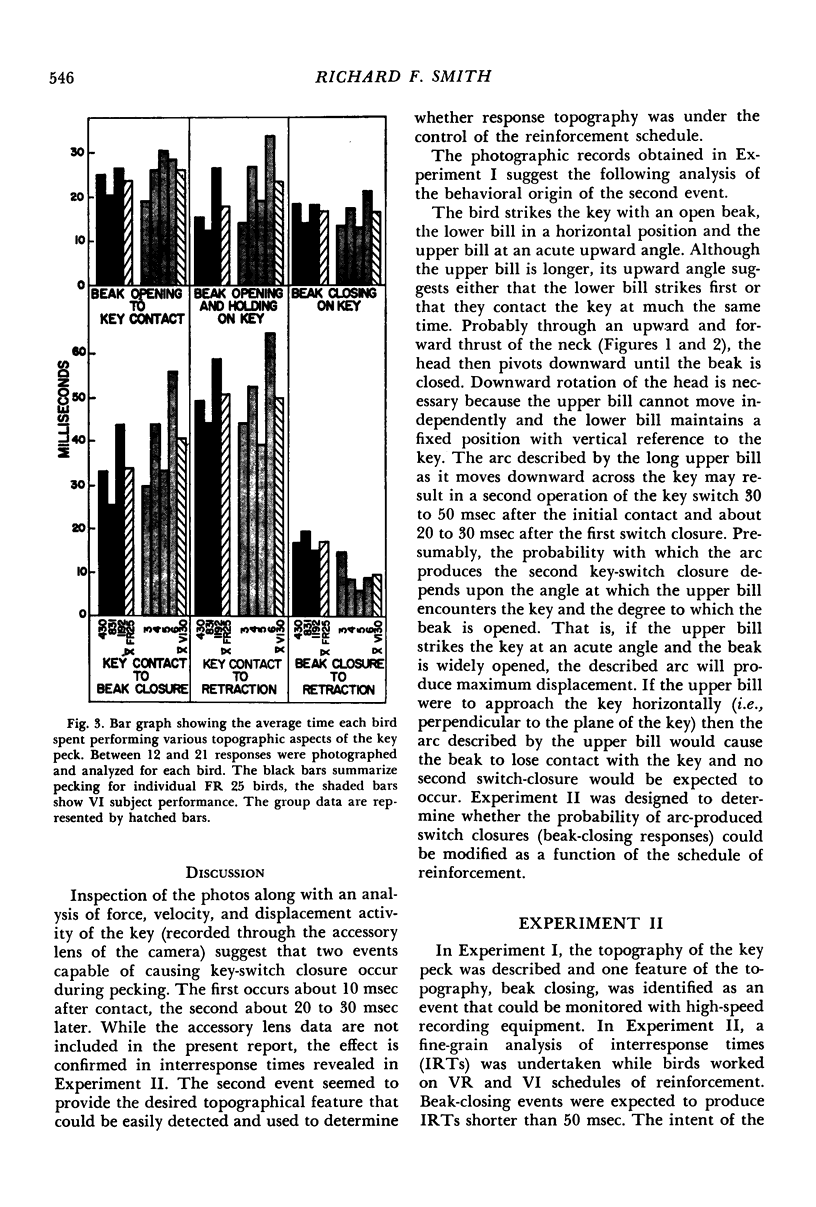
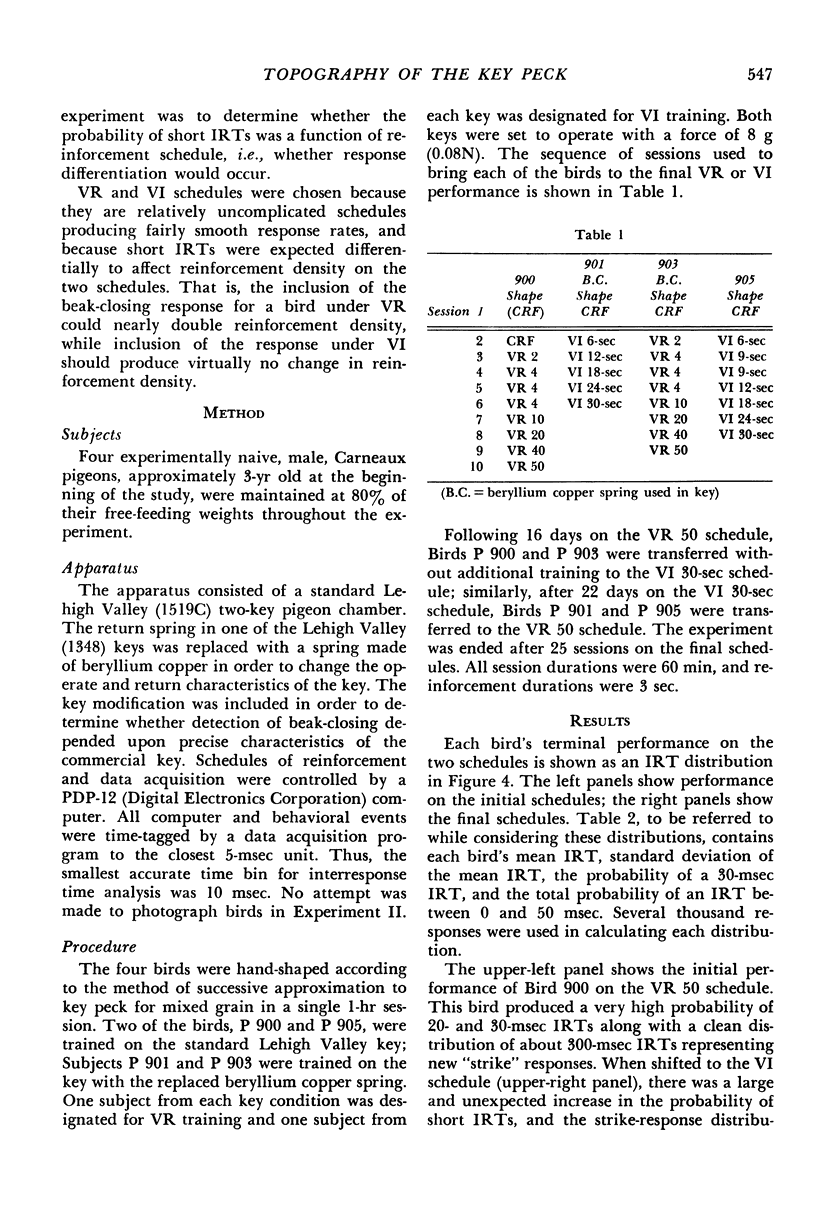



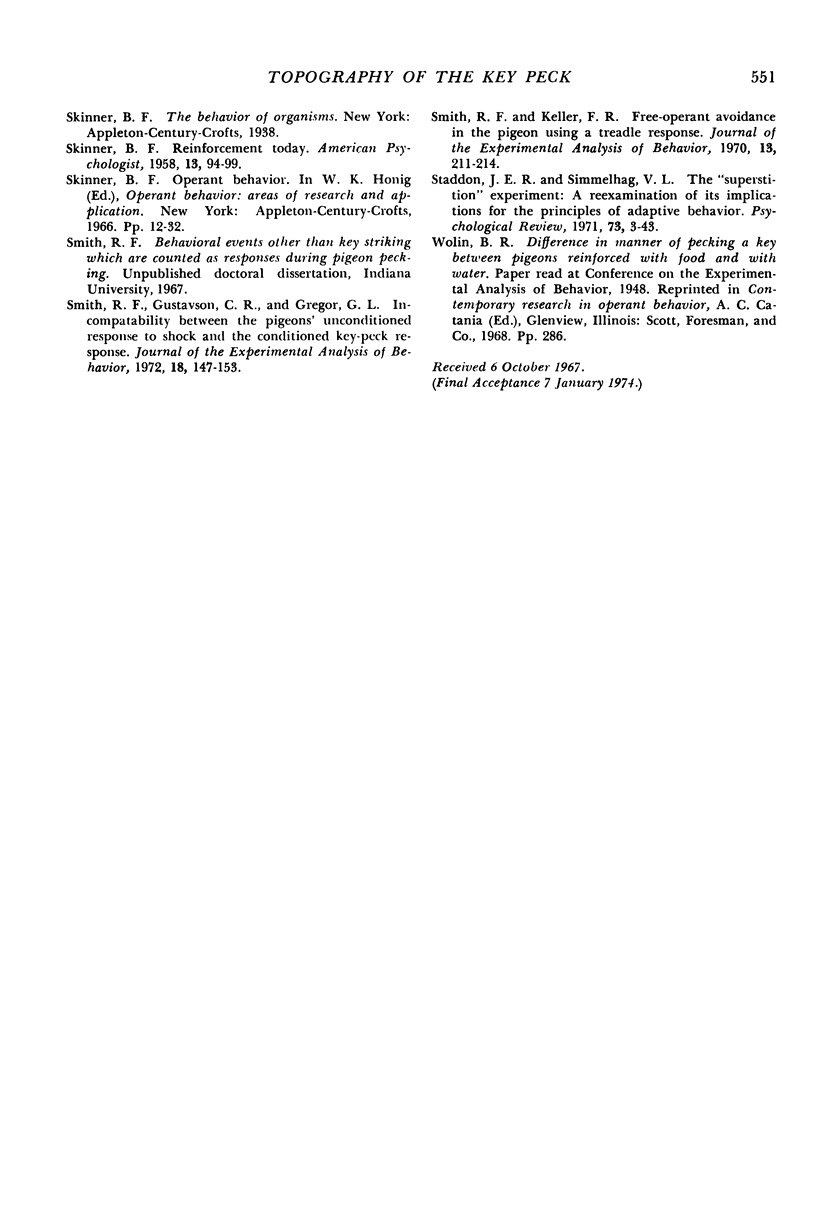
Images in this article
Selected References
These references are in PubMed. This may not be the complete list of references from this article.
- COLE J. L. FORCE GRADIENTS IN STIMULUS GENERALIZATION. J Exp Anal Behav. 1965 Jul;8:231–241. doi: 10.1901/jeab.1965.8-231. [DOI] [PMC free article] [PubMed] [Google Scholar]
- FERSTER C. B. The use of the free operant in the analysis of behavior. Psychol Bull. 1953 Jul;50(4):263–274. doi: 10.1037/h0055514. [DOI] [PubMed] [Google Scholar]
- Foree D. D., Lolordo V. M. Signalled and unsignalled free-operant avoidance in the pigeon. J Exp Anal Behav. 1970 May;13(3):283–290. doi: 10.1901/jeab.1970.13-283. [DOI] [PMC free article] [PubMed] [Google Scholar]
- Hineline P. N., Rachlin H. Notes on fixed-ratio and fixed-interval escape responding in the pigeon. J Exp Anal Behav. 1969 May;12(3):397–401. doi: 10.1901/jeab.1969.12-397. [DOI] [PMC free article] [PubMed] [Google Scholar]
- Jenkins H. M., Moore B. R. The form of the auto-shaped response with food or water reinforcers. J Exp Anal Behav. 1973 Sep;20(2):163–181. doi: 10.1901/jeab.1973.20-163. [DOI] [PMC free article] [PubMed] [Google Scholar]
- Macphail E. M. Avoidance responding in pigeons. J Exp Anal Behav. 1968 Sep;11(5):629–632. doi: 10.1901/jeab.1968.11-629. [DOI] [PMC free article] [PubMed] [Google Scholar]
- Rachlin H., Hineline P. N. Training and maintenance of keypecking in the pigeon by negative reinforcement. Science. 1967 Aug 25;157(3791):954–955. doi: 10.1126/science.157.3791.954. [DOI] [PubMed] [Google Scholar]
- Smith R. F., Gustavson C. R., Gregor G. L. Incompatability between the pigeons' unconditioned response to shock and the conditioned key-peck response. J Exp Anal Behav. 1972 Jul;18(1):147–153. doi: 10.1901/jeab.1972.18-147. [DOI] [PMC free article] [PubMed] [Google Scholar]
- Smith R. F., Keller F. R. Free-operant avoidance in the pigeon using a treadle response. J Exp Anal Behav. 1970 Mar;13(2):211–214. doi: 10.1901/jeab.1970.13-211. [DOI] [PMC free article] [PubMed] [Google Scholar]




